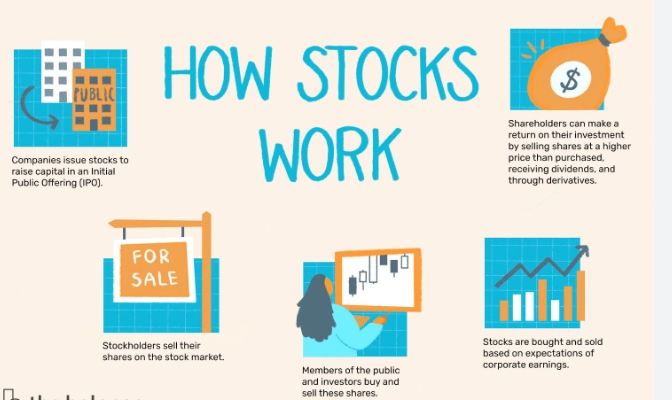Understanding BAC Stock Dividend: A Smart Investment Opportunity
When evaluating investment opportunities, one of the critical aspects that investors often look at is dividends. For those interested in banking stocks, Bank of America (BAC) offers an appealing dividend structure that provides both income and long-term growth potential. This article will delve into BAC stock dividends, their significance, and why they might be a valuable addition to your investment portfolio.
What is the BAC Stock Dividend?
Bank of America, one of the largest financial institutions in the United States, is known for consistently paying dividends to its shareholders. The company pays quarterly dividends, making it an attractive option for investors seeking regular income streams. The dividend yield is calculated based on the stock’s current price, and BAC has a history of maintaining a stable and reliable dividend policy.
Currently, Bank of America’s dividend yield is appealing to investors in the banking sector. The yield fluctuates depending on the stock price, but the bank’s financial stability, along with its history of dividend payments, ensures that shareholders can rely on these payments in the long run.
BAC’s Dividend History and Consistency
One of the main reasons BAC is so popular among dividend investors is its consistency in dividend payments. Bank of America has been paying quarterly dividends for many years, even during economic downturns. This consistency provides a sense of security for investors, knowing that they can expect regular payouts.
BAC has progressively increased its dividends in recent years, signaling a robust financial position and a commitment to rewarding its shareholders. This ability to raise dividends, even in uncertain economic conditions, is a testament to the company’s strength and its ability to generate sustainable earnings.
Factors Influencing BAC Stock Dividends
While the company has a solid dividend track record, several factors influence its dividend payouts. These factors include:
- Company Earnings: Bank of America’s ability to generate consistent profits directly impacts its ability to maintain and increase dividends. Strong earnings lead to higher dividend payouts, while a decline in profits may result in a reduction in dividends.
- Economic Conditions: Economic downturns or recessions may affect the bank’s profitability, impacting its ability to maintain the same level of dividends. During challenging times, BAC may opt to preserve capital to safeguard its financial health.
- Regulatory Environment: Financial institutions are subject to strict regulatory oversight, which can influence dividend payouts. The Federal Reserve, for instance, often provides guidelines on the capital reserves that banks must maintain. These regulations may limit how much of the profits can be paid out as dividends.
- Return on Equity (ROE): BAC’s return on equity is an important measure of its profitability. A higher ROE typically results in higher earnings, which may translate into increased dividend payouts. Investors closely monitor ROE as an indicator of the bank’s financial health and its ability to reward shareholders.
Why Invest in BAC for Dividends?
Investing in BAC for its dividend income offers several benefits:
- Stable Income Stream: For investors looking for a steady income stream, BAC stock dividends can provide regular cash payouts, making it an ideal choice for income-focused portfolios.
- Potential for Growth: Besides the regular dividends, BAC also offers capital appreciation potential. As the company grows and becomes more profitable, both the stock price and the dividends can increase over time.
- Reinvestment Opportunities: Investors who choose to reinvest their dividends can benefit from the compounding effect, purchasing more shares with each dividend payment. Over time, this can significantly increase the total number of shares owned, boosting potential returns.
- Sector Stability: The banking sector is often considered a stable industry, especially for large institutions like Bank of America. This stability gives investors confidence that BAC’s dividend payments are less likely to be disrupted compared to other sectors more susceptible to volatility.
Risks to Consider with BAC Stock Dividends
While BAC stock dividends present a promising investment opportunity, there are a few risks that investors should be aware of:
- Economic Volatility: As with all investments, economic instability can pose a risk to BAC’s performance. During times of financial market turbulence, the bank may decide to cut or suspend dividends to preserve capital.
- Regulatory Changes: Any changes in the regulatory environment that affect the banking sector can influence dividend payments. The Federal Reserve or other regulatory bodies might impose restrictions on dividend payouts during periods of financial uncertainty.
- Interest Rate Risk: BAC, like other financial institutions, is sensitive to interest rate changes. Rising interest rates can impact the profitability of banks, potentially affecting their ability to maintain dividend payouts.
How to Maximize Dividend Returns from BAC Stock
To make the most out of BAC stock dividends, consider the following strategies:
- Long-Term Investment Horizon: Investors should hold onto BAC stock for the long term to benefit from both dividends and capital appreciation. A long-term approach allows dividends to be reinvested, maximizing the overall return.
- Dividend Reinvestment Plans (DRIPs): Enrolling in a DRIP allows investors to automatically reinvest their dividends into additional BAC shares, compounding their investment over time without incurring additional transaction costs.
- Diversifying Your Portfolio: While BAC offers attractive dividends, it is essential to diversify your investment portfolio to mitigate risk. Including other high-quality dividend-paying stocks or assets in your portfolio ensures that you are not overly reliant on a single company for your income.
Conclusion
Bank of America’s dividends make it a strong candidate for income-focused investors. With its history of reliable payouts and the potential for growth, BAC offers a stable investment opportunity in the banking sector. By understanding the factors that influence dividends and employing strategies to maximize returns, investors can effectively capitalize on BAC’s dividend payments. However, it’s essential to keep in mind the risks involved, particularly economic fluctuations and regulatory changes, and ensure that your investment strategy remains diversified.










